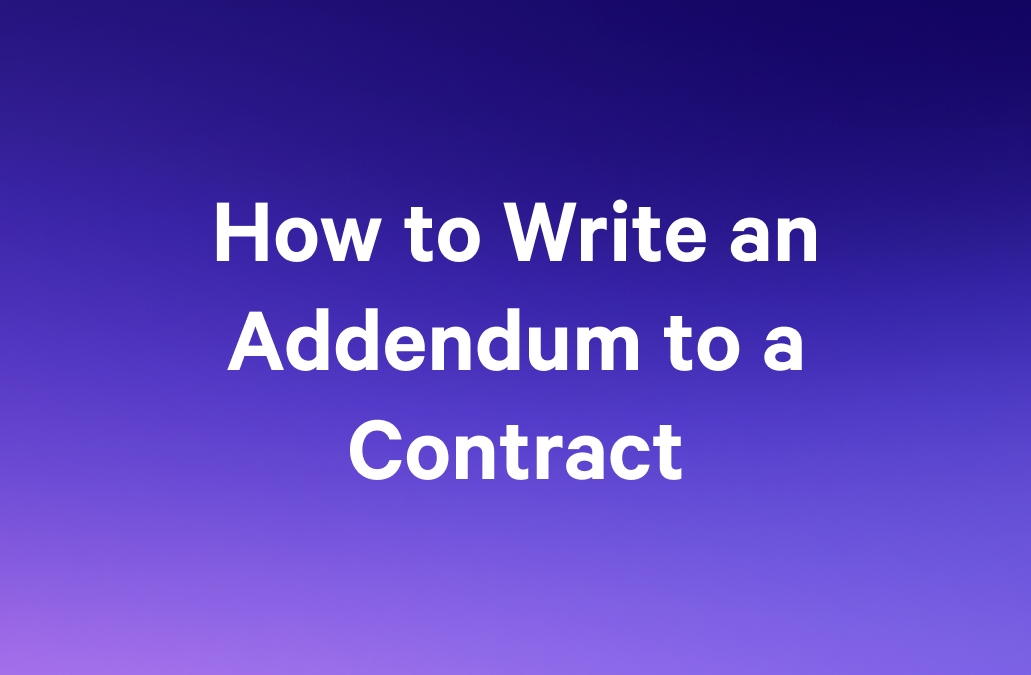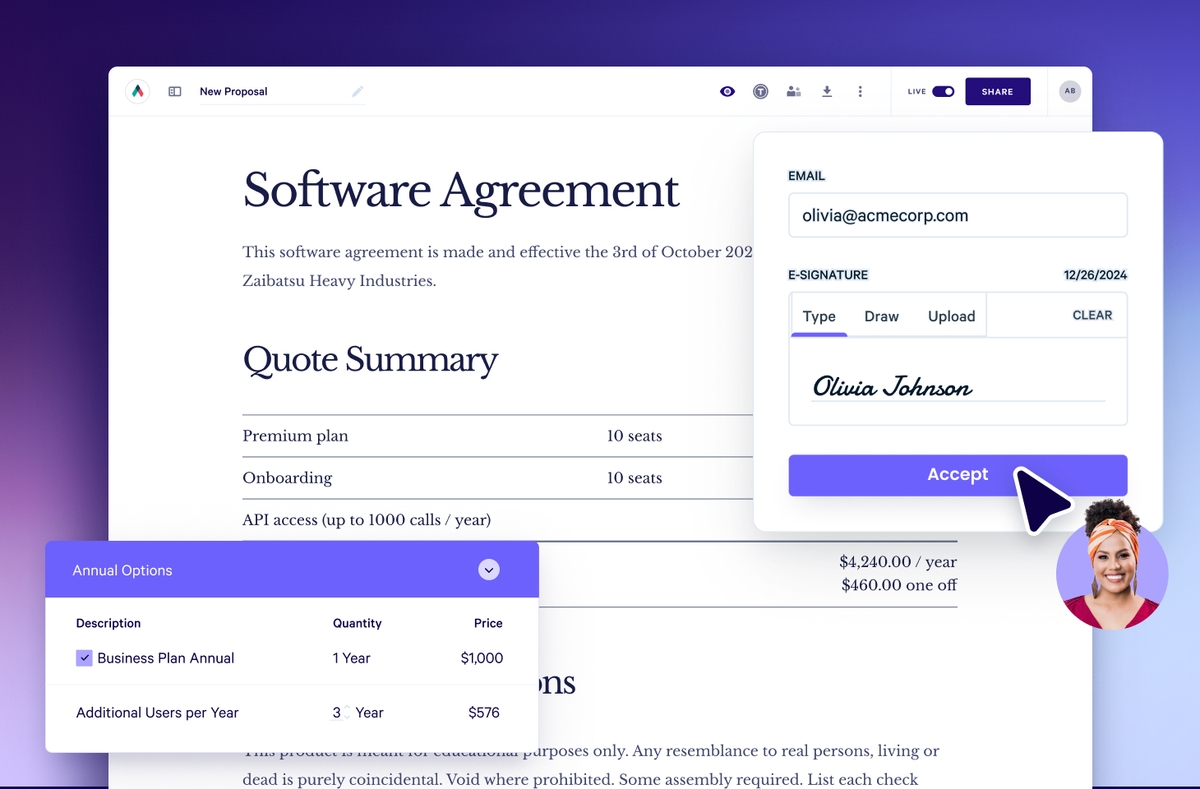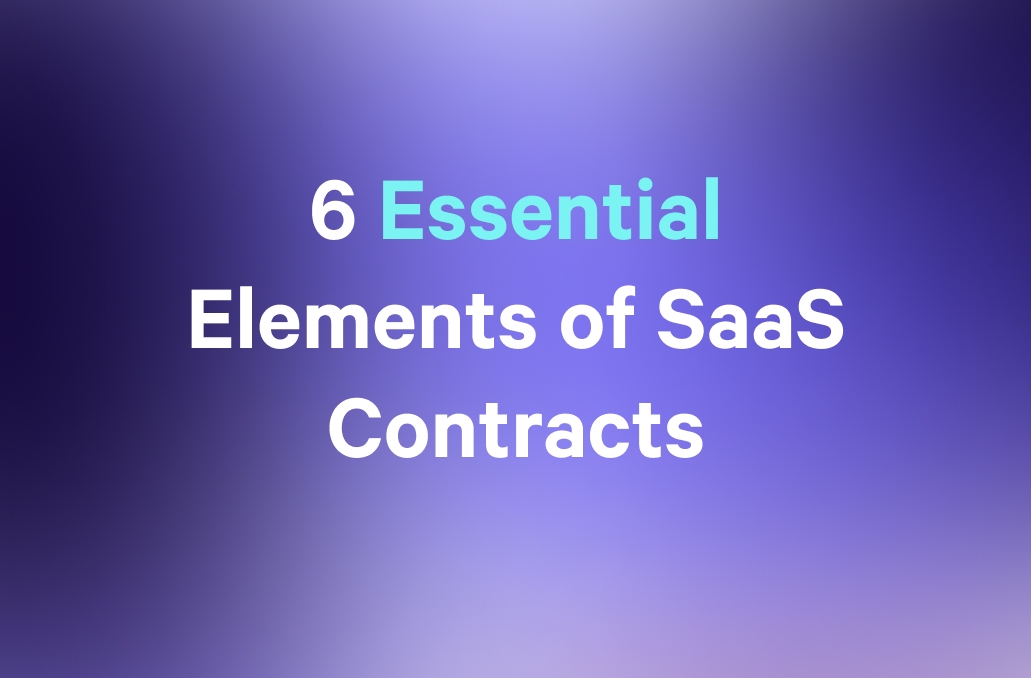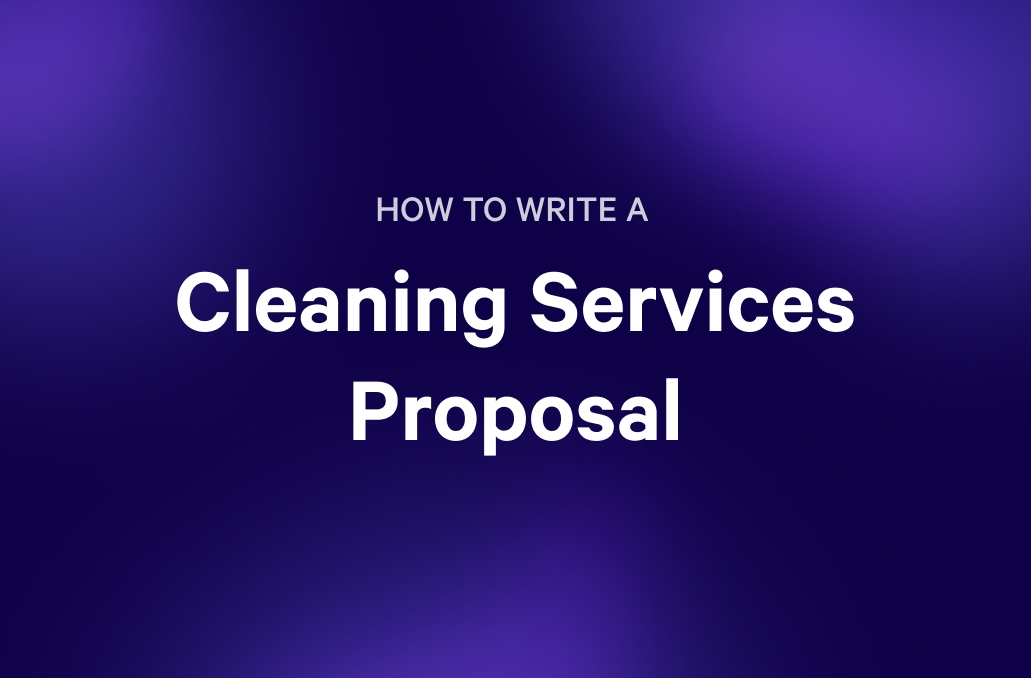Service Contracts: Why 44% of Service Providers Get Stiffed (And How Never to Join Them)

If you're reading this article, chances are you've been burned by a handshake deal or heard someone's horror story that made your stomach drop.
When I first started (naive, eager to please, and terrified that asking for a contract would jinx any deal), a client approached me for what seemed like straightforward work, so I shook hands and dove in. Three months later, their scope had mysteriously expanded to include endless revisions and "quick tweaks" that consumed my entire weekends. When I finally invoiced them, they acted shocked, saying, "We never agreed to pay extra for that."
I lost $8,500 on that deal.
You and I aren't alone in this nightmare—44% of service providers get stiffed by clients who don't pay for services rendered, and businesses collectively spend $870 billion annually on dispute resolution (much of which could be prevented with proper service contracts upfront).
In this article, we'll explore why service contracts actually speed up deals (not slow them down), break down the essential types every service provider needs, and give you templates that transform chaotic client relationships into profitable, stress-free partnerships.
Key takeaways
- Service contracts are essential for service providers to prevent financial losses and manage client relationships effectively.
- Beyond legal protection, well-structured service contracts can accelerate deal closures and foster profitable, stress-free partnerships.
- Implementing service contracts smoothly involves strategic timing, starting with new clients, and leveraging technology to combine proposals and contracts into a seamless, user-friendly process.
What is a service contract (and why it's not an SLA)
A service contract is a legally binding agreement that defines the business relationship between you (the service provider) and your client, covering everything from what work you'll do to how and when you'll get paid. It sets the ground rules upfront so everyone knows what to expect.
Let’s say you are a digital marketing agency working with a restaurant, your service contract will say you'll create 20 social media posts monthly, manage Facebook and Instagram accounts, respond to comments within 4 hours during business days, deliver monthly performance reports, and get paid $3,000 by the 15th of each month (with extra platforms costing additional fees)—you get the drift.
A Service Level Agreement (SLA), on the other hand, is different. While your contract covers the business basics, an SLA gets specific about performance targets and manages your promise about speed and quality standards.
Here's the key difference:
| What it does | Service contract | Service level agreement |
|---|---|---|
Main job | Sets up the business deal | Measures how well you perform |
Covers | What you'll do + how you get paid | How fast/accurate you'll be |
Example | "I'll run your social media for $3,000/month" | "I'll post within 2 hours of schedule, 99% of the time" |
When you need it | Every single client project | Only when speed/quality metrics matter |
What happens when broken | Legal consequences, payment issues | Performance penalties, service credits |
Types of service contracts for modern providers
Now that we've come this far, let's explore the various types of service contracts that exist and where Qwilr can help. We're highlighting the key service agreements explicitly focused on service providers (and while many feel that a detailed proposal can substitute for a proper contract, a proposal outlines what you plan to do while a contract legally binds both parties—you need both).
Digital marketing contracts
Remember my earlier story about endless revisions? Digital work is particularly vulnerable to this because clients see a Facebook post and think "that only takes five minutes to create", ignoring the strategy, design time, and approval rounds behind it. Digital marketing contracts protect agencies and freelancers managing social media, content creation, SEO, or paid advertising from scope creep disasters.
Qwilr's digital marketing contract template helps you (or your sales team if you're an agency) set clear boundaries around what platforms you'll manage, how many posts you'll create, who owns the creative work, and what happens when clients want changes or additions to the original plan.
Our template also includes special interactive quote blocks that let clients choose service tiers instantly, visual timelines with project milestones so everyone knows what to expect when, and built-in approval workflows that prevent scope creep before it starts.
Sales contracts
If you're in sales, business development, or earn commissions, you know the drill…territories change, leads get reassigned, commission structures shift mid-deal, and suddenly you're wondering if you'll actually get paid for months of relationship building. It happens to the best of us, which is why you need clear contracts that lock down commission rates, establish territory boundaries, clarify client relationship ownership, and set rules for what happens when things change or relationships end.
Qwilr's sales contract template makes it easy to define these critical details upfront, so you can focus on building relationships instead of worrying about getting paid.
SaaS contracts
With SaaS sales the subscription struggle is real. Unlike one-time projects where you deliver and move on, SaaS means ongoing complexity: clients who expect instant feature updates, demand refunds mid-cycle, or think their $50/month plan entitles them to white-glove support. Add in data security concerns and uptime expectations, and you've got a recipe for disputes without the right contract protection.
Our SaaS contract template allows sales reps at small and big organizations to cover subscription terms, data protection policies, realistic uptime commitments, feature access controls, and cancellation procedures with ease and without alienating clients.
Marketing contracts
Ever had a client say "we just need to pivot our entire brand strategy" six months into a project? Strategic marketing work evolves as businesses grow, with clients expecting you to adapt your approach without necessarily adjusting fees or timelines.
Whether you're handling brand strategy, market research, or traditional advertising, you need contracts that build in flexibility while maintaining profitability. But how do you protect yourself when the scope keeps shifting?
These longer-term relationships require different protection than project-based work. Qwilr's marketing contract template establishes strategic boundaries, realistic delivery timelines, brand asset ownership, research confidentiality, and structured flexibility that lets you grow with clients without getting burned.
Miscellaneous service contracts
Beyond these core templates, many service providers need specialized agreements for consulting, freelance writing, design services, training programs, or niche professional services.
While we don't provide specific templates for every service type, these fundamental contract principles apply across industries, so it’s best to choose based on your specific needs and adapt accordingly.
Alternatively, use our agreements feature to send plain-text, formal service contracts alongside your proposal.
Essential elements every service contract needs
Here's the thing about contracts: 70% of friction points arise before a contract is even signed, which means most disputes happen because essential elements were missing or unclear from the start.
Your service contract is basically the rulebook for your client relationship, and having been burnt before, what I've realized is that if you skip the important rules, you'll spend more time arguing about what you agreed to than actually doing the work.
Every service contract needs these five non-negotiable elements to protect your business and keep client relationships healthy. Let’s look at them:
Clear scope definition
The first and foremost step, and what's central to any service contract, is defining exactly what you will and won't do. It's important to spell out specific deliverables, timelines, and any limitations upfront because vague language kills relationships.
For example, "15 Facebook posts per month with brand-approved graphics" is infinitely better than "social media management" because it prevents clients from expecting Instagram stories, LinkedIn articles, and video content too.
Payment terms and schedules
The second critical element that protects your cash flow is getting crystal clear about money i.e. defining your rates, when payments are due, what happens with late payments, and any upfront deposits required because nothing damages professional relationships faster than payment confusion.
Just recently, Christina Le (Head of Marketing at a SaaS company who also freelances) shared her experience of how a brand failed to pay her on time, ignored follow-ups for weeks, and when they finally paid, sent a cold, transactional email with zero acknowledgement of the delay.
While she was able to escalate and eventually get paid, not everyone is lucky enough to have that kind of reach or persistence, which is exactly why your payment terms need to be bulletproof from day one.
So where do you begin? Start by including specifics like "50% deposit due before work begins, remaining 50% due within 15 days of project completion, with 1.5% monthly late fees" rather than vague promises about "payment upon completion." The more specific your payment terms, the less room there is for confusion or delayed payments later on.
Change management procedures
The third element that saves your sanity is establishing how scope changes will be handled before they happen. It's important to define who can approve changes and how additional costs will be calculated because this prevents the dreaded "while you're at it, can you also..." requests that derail timelines and budgets without compensation.
I've learned this the hard way, but here's how I respond to scope creep now, it keeps you polite yet professional:
How to respond to scope creep
- "That sounds like a great addition, should we handle this as a separate project or would you prefer I send a change order estimate?"
- "I'd love to help with that, but it falls outside our original scope. Can we discuss timeline and budget for this additional work?"
- "That's definitely possible! Let me put together a quick estimate for the extra time and resources that would require."
Having these procedures in your contract means you're not the bad guy for asking to be paid fairly.
Termination clauses
It's important to define notice periods, final payment procedures, and what happens to work completed but not yet delivered because a lot can change during a project—companies get acquired, budgets get slashed, key contacts leave, or sometimes clients just decide to pivot completely.
Without termination clauses, you could end up working for free or fighting for payment on completed work. Specify whether cancellation fees apply, who owns work-in-progress materials, and exactly how final invoices will be handled, because when relationships end (and they sometimes do), you want the exit to be as professional as the entrance.
Intellectual property ownership
The fifth and final element that protects your creative work is clarifying who owns what you create and when ownership transfers. It's important to specify that ownership transfers only after full payment, and whether you can use the work in your portfolio or case studies, because this prevents clients from using your designs, copy, or creative assets while still owing you money.
Your IP clause should state something like "Client receives full ownership and usage rights upon final payment, Creator retains right to showcase work in portfolio with client attribution" because it gives you leverage when payments are late and protects your ability to market your best work to future clients.
How to implement service contracts without killing deals
So far, you've learned what service contracts are, which types you need, and what essential elements to include. The next big question in your mind is probably "Okay, but how do I actually start using these without scaring away clients?"
Feeling squeamish about this is totally normal—it's one of those things in life like asking for a raise—necessary, but uncomfortable until you've done it a few times. The reality is that buyers actually prefer documentation because it helps them make informed decisions faster, reduces confusion with stakeholders, and gives them something concrete to reference throughout the project. Here’s how to begin:
Start with new clients first
The easiest place to implement contracts is with brand-new relationships where expectations haven't been set yet. When you're confident with your contract process on new clients, you'll have the experience to handle existing relationships smoothly.
Position your contract as part of your standard onboarding process. You can say "Great! Now that we're moving forward, I'll send over our service agreement so we can get everything officially started."
For existing clients, timing is everything
Introducing contracts mid-relationship requires more finesse, but natural transition points make it easier.
Contract renewals, project expansions, or rate increases all provide perfect opportunities to say something like: "As we're expanding our work together, I'd love to formalize our agreement to make sure we're both protected and clear on expectations."
Use technology to make it seamless
Here's where most service providers make contracts feel clunky: they send separate proposal documents, then separate contract PDFs that need printing, signing, scanning, and emailing back.
Platforms like Qwilr eliminate this friction by combining your proposal and contract into one seamless experience, so clients can sign immediately while they're engaged rather than dealing with multiple documents and delayed signatures. The best part is that you don't need to be tech-savvy to set this up—Qwilr's agreement and e-signature feature means you can easily embed a plain-text agreement directly into your proposal or design your contract as a web-based page.
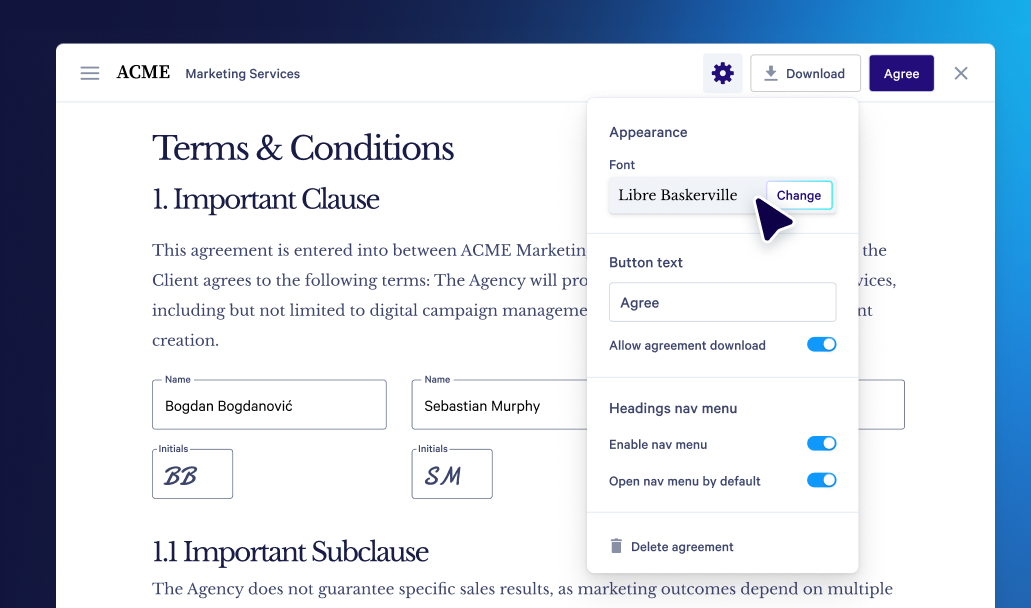
Not to forget that you can also keep a tab on when contracts are viewed, signed, and need renewal, so nothing falls through the cracks.
Red flags: When to walk away from contract-resistant clients
Not every client pushback about contracts is a red flag. Sometimes they just need education, so when clients resist, try these responses first:
- "This seems overly formal" - Say "This actually helps maintain our great working relationship by keeping everything clear."
- "We've never needed contracts before" - Say "You're right, and this just puts that trust in writing to protect us both."
- "Can't we use something simple?" Say- "Absolutely! This covers the basics we've already discussed."
If they continue pushing back after reasonable explanations, watch for these red flags:
- Refuse any written agreement and insist everything should be "based on trust"
- Pressure you to start work immediately while "figuring out paperwork later"
- Demand unlimited revisions without additional compensation
- Question every standard business practice you mention
Walking away from contract-resistant clients isn't about being difficult, it's about protecting your business health and what I have learnt with over fifteen years in the industry is that the clients worth keeping will appreciate your professionalism.
If you’re ready to make contracts feel less intimidating, sign up for a free trial to see how Qwilr’s seamless workflows can turn hesitant prospects into confident clients.
About the author

Brendan Connaughton|Head of Growth Marketing
Brendan heads up growth marketing and demand generation at Qwilr, overseeing performance marketing, SEO, and lifecycle initiatives. Brendan has been instrumental in developing go-to-market functions for a number of high-growth startups and challenger brands.
